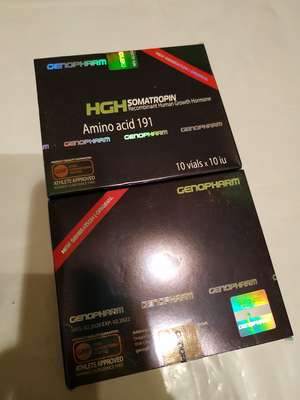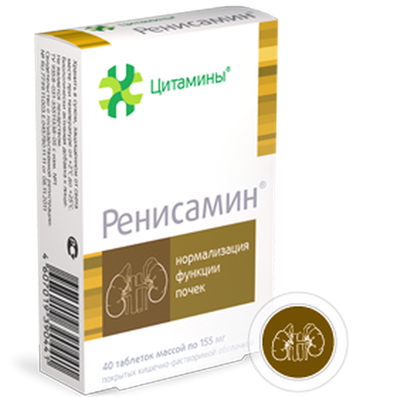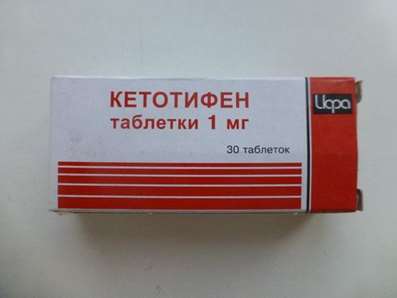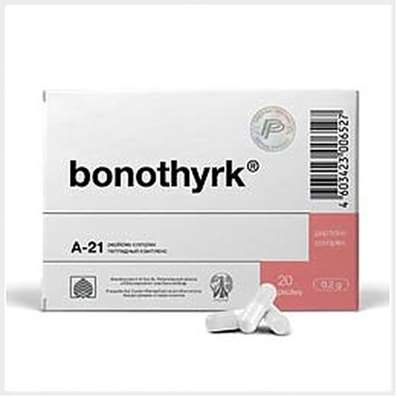Instruction for use: Zodac Express
I want this, give me price
Dosage form: Film-coated tablets
Active substance: Levocetirizinum*
ATX
R06AE09 Levocetirizine
Pharmacological groups:
Antiallergic agent - H1-histamine receptor blocker [H1-antihistamines]
The nosological classification (ICD-10)
H04.9 Illness of lacrimal apparatus, unspecified: Insufficient production of tear fluid; Insufficient lacrimation; Red eye syndrome; Lachrymation; Dryness of the anterior surface of the eye
H10.1 Acute atopic conjunctivitis: Allergic conjunctivitis; Allergic eye diseases; Allergic conjunctivitis; Allergic conjunctivitis caused by chemical and physical factors; Allergic rhinoconjunctivitis; Allergic inflammation of the eyes; Spring Qatar; Spring keratitis; Spring conjunctivitis; Conjunctivitis allergic; Year-round allergic conjunctivitis; Exacerbation of pollinosis in the form of rhinoconjunctival syndrome; Acute allergic keratoconjunctivitis; Acute allergic conjunctivitis; Superficial bacterial infection of the eyes; Rhinoconjunctivitis; Seasonal allergic conjunctivitis; Seasonal conjunctivitis; SENSORY; Chronic allergic keratoconjunctivitis; Chronic allergic conjunctivitis
H11.4 Other conjunctival vascular diseases and cysts: Edema of the conjunctiva; Secondary hyperemia of the eye; Hyperemia of the conjunctiva; Hyperemia of the membranes of the eye
J00 Acute nasopharyngitis [rhinitis]: Viral rhinitis;Inflammation of the nasopharynx; Inflammatory Nose Disease; Purulent rhinitis; Nasal congestion; Nasal congestion due to cold and flu; Difficulty with nasal breathing; Difficulty with nasal breathing for colds; Difficult nasal breathing; Difficult nasal breathing for colds; Nasal hypersecretion; Coryza; ARI with phenomena of rhinitis; Acute rhinitis; Acute rhinitis of various origins; Acute rhinitis with thick purulent-mucous exudate; Acute rhinopharyngitis; Edema of the mucous membrane of the nasopharynx; Rhinitis; Rhinorrhea; Infectious-inflammatory disease of ENT organs;Severe cold; Rhinopharyngitis
J30 Vasomotor and allergic rhinitis: Allergic rhinopathy; Allergic rhinosinusopathy; Allergic diseases of the upper respiratory tract; Allergic rhinitis; Allergic rhinitis seasonal; Vasomotor runny nose; Prolonged allergic rhinitis; All-year-round allergic rhinitis; All-year allergic rhinitis; Year-round or seasonal allergic rhinitis; All-the-year-round rhinitis of an allergic nature; Rhinitis vasomotor allergic; Exacerbation of pollinosis in the form of rhinoconjunctival syndrome; Acute allergic rhinitis; Edema of the nasal mucosa; Edema of the nasal mucosa; Edema of the mucous membrane of the nasal cavity; Swelling of the nasal mucosa; Swelling of the nasal mucosa; Pollinosis; Permanent allergic rhinitis; Rhinoconjunctivitis; Rhinosinusitis; Rhinosinusopathy; Seasonal allergic rhinitis; Seasonal allergic rhinitis; Hay rhinitis; Chronic allergic rhinitis; Allergic diseases of the respiratory tract
J30.1 Allergic rhinitis caused by pollen of plants: Hay fever; Hay fungus; hay fever; Hypersensitivity to pollen of plants; Polyposis allergic rhinosinusitis; Seasonal pollinosis; Seasonal rhinitis
L20 Atopic dermatitis: Allergic diseases of the skin; Allergic skin disease noninfectious etiology; Allergic skin disease etiology nemikrobnoy; Allergic skin diseases; Allergic skin lesions; Allergic reactions on the skin; atopic dermatitis; Allergic dermatosis; Allergic diathesis; Allergic itching dermatosis; Allergic skin disease; Allergic skin irritation; allergic Dermatitis; atopic Dermatitis; allergic dermatoses; exudative diathesis; Itchy atopic eczema Itchy allergic dermatosis; Allergic skin disease; Cutaneous allergic reaction to drugs and chemicals; Cutaneous reactions to medications; Skin and allergic disease; Acute eczema; common neurodermatitis; Chronic atopic dermatitis; Exudative diathesis
L29 Itching: Itching with partial obstruction of the biliary tract; Dermatitis itchy; Dermatosis with persistent itching; Other itching dermatoses; Itching dermatoses; Itching allergic dermatosis; Itching dermatitis; Itching dermatosis; Itching itch; Excruciating itching; Severe itching; Endogenous itching; Skin itching with dermatosis; Restricted itchy dermatitis; Itching of the skin; Itchy scalp; Itching eczema
L29.8 Other itching: Itching of the eye; Itching of the conjunctiva; Itching of the palate; Itching of the nose; Itching of the nasal mucosa; Itchy syringe; Itchy pruritus
L50 Urticaria: Idiopathic chronic urticarial; Injury Urticaria; Chronic urticarial; Hives of the newborn
L50.1 Idiopathic urticaria: Idiopathic urticarial; Chronic idiopathic urticaria
R06.7 Sneezing: Sneezing
R21 Rash and other nonspecific skin rashes: Skin rash; Skin and mucous eruptions; Skin rashes; Drug rash; Medicinal rash fixed; Dry skin rashes; Rash; Toxidermy; Toxicoderma; Toxic rash; Korepodobnye rashes from drugs; Macular Papular Eruptions; Drug-induced rash
T78.3 Angioedema: Edema Quincke; Laryngeal exacerbation with angioneurotic edema; Recurrent angioedema; Allergic edema; Recurrent swelling of Quincy
Composition
Tablets covered with a film coating.
active substance: Levocetirizine dihydrochloride 5 mg
Excipients
Core: lactose monohydrate - 67.5 mg; MCC - 25 mg; Sodium carboxymethyl starch - 1 mg; Silicon dioxide colloidal - 0.5 mg; Magnesium stearate - 1 mg
Film membrane: hypromellose 2910/5 - 3.3 mg; Macrogol 6000 - 0.35 mg; Talc - 0.85 mg; Titanium dioxide (E171) 0.5 mg
Description of dosage form
Oblong biconvex tablets covered with a film shell, white or almost white, with an engraved "e" on one side.
Pharmachologic effect
Mode action - antiallergic.
Pharmacodynamics
Levocetirizine, (R) -enantiomer of cetirizine, is an inhibitor of peripheral H1-histamine receptors, whose affinity is 2 times higher than that of cetirizine. After a single administration of levocetirizine, H1-histamine receptor binding was observed to be 90% after 4 hours and 57% at 24 hours.
Levocetirizine influences the histamine-dependent stage of allergic reactions, reduces the migration of eosinophils, reduces vascular permeability, limits the release of inflammatory mediators, prevents the development and facilitates the course of allergic reactions, has antiexudative, antipruritic effect, practically no anticholinergic and antiserotonin action, Sedative action.
The effect of levocetirizine begins 12 minutes after a single dose in 50% of patients, after 1 hour in 95% of patients and continues for 24 hours. Levocetirizine does not affect the QT interval on the ECG.
Pharmacokinetics
The pharmacokinetics of levocetirizine is linear in nature, independent of dose and time, and varies only slightly in different patients.
After ingestion, levocetirizine is rapidly and completely absorbed from the digestive tract.
The intake of food does not affect the completeness of absorption, although its rate decreases.
Plasma Cmax is achieved after 0.9 hours (54 min) after taking the drug.
Css is installed after 2 days. Plasma Cmax after a single dose of 5 mg of levocetirizine is 270 ng / ml, and after repeated administration at a dose of 5 mg - 308 ng / ml.
Levocetirizine binds to plasma proteins by 90%. Vd is 0.4 l / kg. Data on the distribution of levocetirizine in tissues and its penetration through the BBB in humans are absent.
Levocetirizine is metabolized in small amounts (<14%) in the body by N- and O-dealkylation (unlike other antagonists of H1-histamine receptors that are metabolized in the liver by the cytochrome system) to form a pharmacologically inactive metabolite.
Due to limited metabolism and the absence of metabolic inhibitory activity, the interaction of levocetirizine at the metabolic level with other substances is unlikely. T1 / 2 in adults is 7.9 ± 1.9 hours; In young children, T1 / 2 is shortened. The average observed total clearance is 0.63 ml / min / kg.
Levocetirizine is mainly excreted unchanged in urine, on average, about 85.4% of the dose taken by glomerular filtration and active tubular secretion. Excretion through the intestine (with feces) is only 12.9% of the dose.
Patients with renal insufficiency. The total clearance of levocetirizine depends on Cl creatinine. Therefore, patients with moderate and severe renal insufficiency are encouraged to increase the intervals between doses of the drug in accordance with Cl creatinine. In patients with anuria and terminal stage of renal failure, the total clearance of levocetirizine is reduced by approximately 80% compared to healthy people. The amount of levocetirizine withdrawn with a standard 4-hour hemodialysis procedure is less than 10%.
Indications of the Zodac Express
Treatment of symptoms of year-round (persistent) and seasonal (intermittent) allergic rhinitis and allergic conjunctivitis such as itching, sneezing, nasal congestion, rhinorrhea, lacrimation, congestion hyperemia;
Pollinosis (hay fever);
Urticaria, including, chronic idiopathic urticaria;
Quincke's edema (as an adjuvant therapy);
Other allergic dermatoses, accompanied by itching and rashes.
Contraindications
Hypersensitivity to levocetirizine and other piperazine derivatives or to any of the auxiliary components of the drug;
Terminal renal failure with Cl creatinine less than 10 mL / min;
Congenital galactose intolerance, lactase deficiency or malabsorption of glucose-galactose (due to the content of lactose in the preparation)
pregnancy;
Children under 6 years of age (for this dosage form).
With caution: simultaneous reception with alcohol (see "Interaction"); Chronic renal failure with Cl creatinine more than 10 ml / min, but less than 50 ml / min (dosage adjustment is required); Elderly age (probably a decrease in glomerular filtration).
Application in pregnancy and breastfeeding
The use of the drug in pregnancy is contraindicated.
Levocetirizine is excreted in breast milk, so if it is necessary to use the drug in lactation it is recommended to stop breastfeeding.
Side effects
Side effects of levocetirizine are divided according to the system-organ classes according to the classification of the Medical Dictionary of Regulatory Activities (MedDRA) with the frequency of their occurrence: often (≥1 / 100 and <1/10); Infrequently (≥1 / 1000 and <1/100); Very rarely (<1/10000).
From the side of the immune system: very rarely - hypersensitivity reactions, incl. Anaphylactic reactions.
From the nervous system: often - headache; Infrequently - drowsiness; Very rarely - aggression, agitation, hallucinations, depression, convulsions.
From the side of the organ of vision: very rarely - visual disorders.
From the heart: very rarely - a feeling of palpitations, tachycardia.
From the respiratory system, chest and mediastinum: very rarely - shortness of breath.
From the gastrointestinal tract: often - dryness of the oral mucosa; Infrequently - pain in the abdomen; Very rarely - nausea, diarrhea.
From the liver and biliary tract: very rarely - hepatitis.
From the skin and subcutaneous tissues: very rarely - angioedema, itching, rash, including a drug rash, urticaria.
From the musculoskeletal and connective tissue: very rarely - myalgia.
Common violations: often - fatigue; Infrequently, asthenia.
From laboratory and instrumental data: very rarely - a violation of liver function indicators, weight gain.
Interaction
The interaction of levocetirizine with other drugs, including studies with inducers of the isoenzyme CYP3A4, has not been studied.
In the study of the drug interaction of the racemate cetirizine with pseudoephedrine, cimetidine, ketoconazole, erythromycin, azithromycin, glipizide and diazepam, clinically significant undesirable interactions have not been identified.
With simultaneous appointment with theophylline (400 mg / day), the total clearance of cetirizine is reduced by 16% (theophylline kinetics does not change).
In a study with simultaneous administration of ritonavir (600 mg twice daily) and cetirizine (10 mg per day), it was shown that the exposure of cetirizine increased by 40%, and exposure to ritonavir slightly changed (11%).
In sensitive patients, concomitant administration of levocetirizine and alcohol or other substances depressing the CNS can exacerbate the effect on the central nervous system, although it has been shown that the racemate of cetirizine does not enhance the effect of alcohol.
Dosing and Administration
Inside, not liquid and squeezed liquid, regardless of food intake. It is recommended to take a daily dose at one time.
Adults, teenagers and children over 6 years. The recommended daily dose is 5 mg (1 table).
Patients of advanced age. In elderly patients with moderate and severe renal failure, dose adjustment is recommended (see Patients with impaired renal function).
Patients with impaired renal function. The interval between doses of the drug is determined individually, taking into account the function of the kidneys. Information on dose adjustment is given in the table below. To use it, creatinine Cl creatinine should be calculated in a patient in ml / min based on serum creatinine concentration (mg / dl) using the following formula:
Cl creatinine = ([140 - age, years] × weight, kg) / (72 × serum creatinine, mg / dL)
For women, the value obtained should be multiplied by 0.85.
Table
Correction of dose in patients with impaired renal function
| Group | Clcreatinine, ml/min | Dose and multiplicity of admission |
| Normal function | ≥80 | 5 mg 1 per a day |
| Easy CRF | 50–79 | 5 mg 1 per a day |
| Moderate CRF | 30–49 | 5 mg 1 per in 2 days |
| Severe CRF | <30 | 5 mg 1 per in 3 days |
| Terminal CRF - patients on dialysis | <10 | Contradicted |
In children with impaired renal function, the dose is adjusted individually taking into account Cl creatinine and body weight. There are no separate data on the use in children with impaired renal function.
Patients with impaired hepatic function. With an isolated violation of liver function, dose adjustment is not required. In patients with hepatic renal failure, dose adjustment is recommended (see Patients with impaired renal function).
Duration of treatment. Treatment of allergic rhinitis is carried out in accordance with the course of the disease; The drug can be stopped if symptoms disappear and resume when relapsed. In the case of chronic allergic rhinitis, prolonged treatment during the period of action of allergens can be prescribed. Currently, the clinical experience of using levocetirizine in the form of tablets coated with a film membrane, 5 mg, is limited to 6 months.
Overdose
Symptoms: drowsiness and agitation (in adults) are possible, as well as anxiety, followed by drowsiness (in children).
Treatment: there are no specific antidotes of levocetirizine. In case of an overdose, symptomatic or supportive treatment is recommended. If you take a little time after taking the medication, you should wash the stomach. Levocetirizine is practically not excreted in hemodialysis.
Special instructions
During treatment with the drug is not recommended to take ethanol.
Impact on the ability to drive vehicles or engage in other potentially hazardous activities. Levocetirizine, when administered at recommended doses, does not adversely affect the attention and speed of psychomotor reactions and the ability to drive vehicles. Nevertheless, during the period of taking the drug, it is advisable to refrain from engaging in potentially dangerous activities that require an increased concentration of attention and speed of psychomotor reactions.
Release form
Tablets, film-coated, 5 mg. By 7 or 10 tab. In PVC / Aclar / PVC / Al or Al / Al blister. 1 or 4 blisters on 7 tables; 2 blisters for 10 tab. Placed in a cardboard box.
Manufacturer
Zentiva, Czech Republic.
Conditions of leave from pharmacies
Without recipe.
Storage conditions of the drug Zodac Express
At a temperature not higher than 25 ° C.
Keep out of the reach of children.
Shelf life of the drug Zodac Express
2 years.
Do not use after the expiry date printed on the package.

 Cart
Cart





